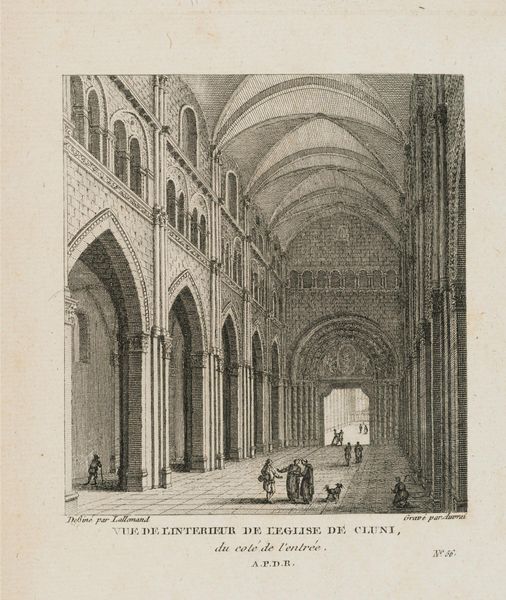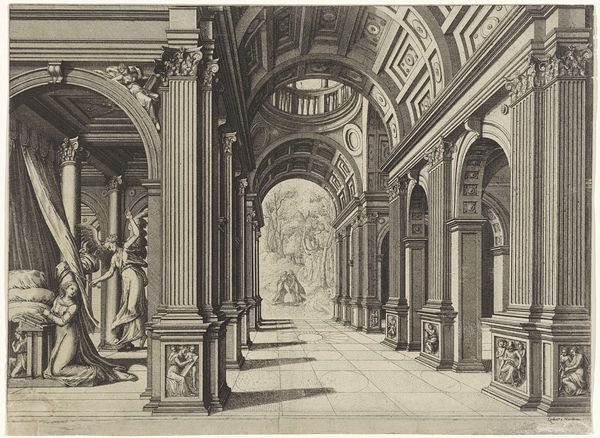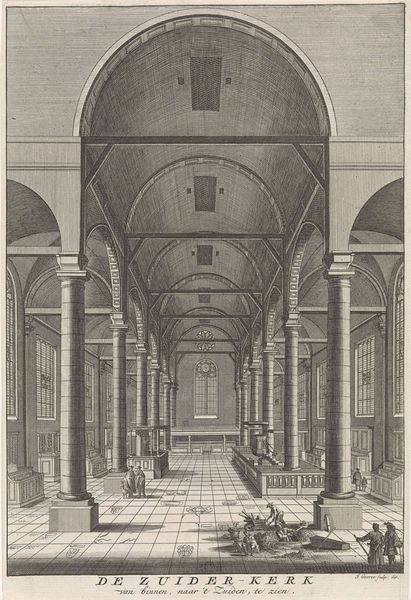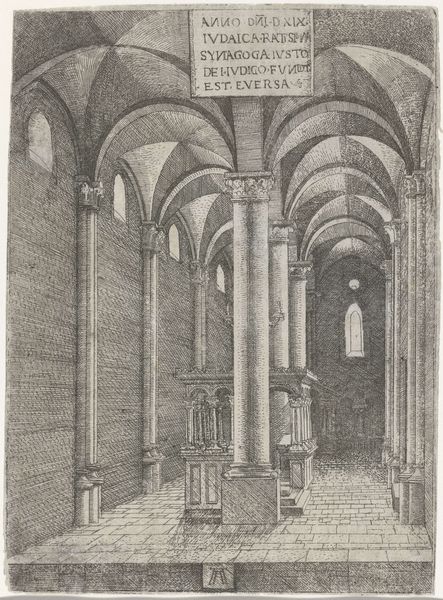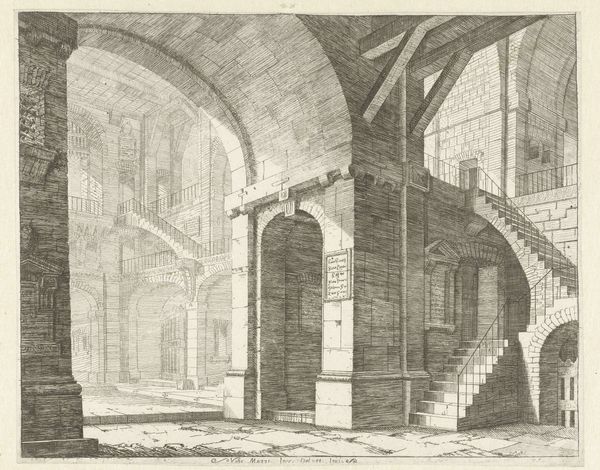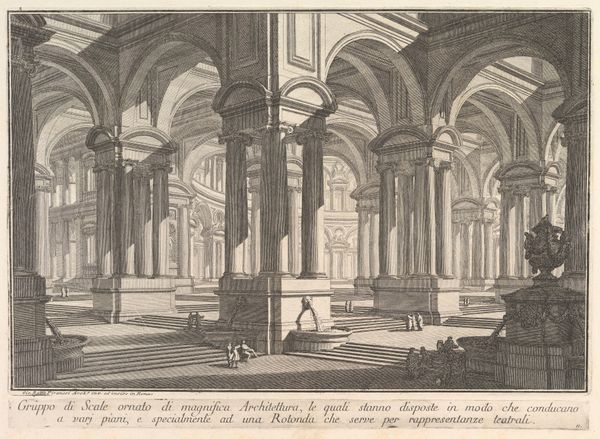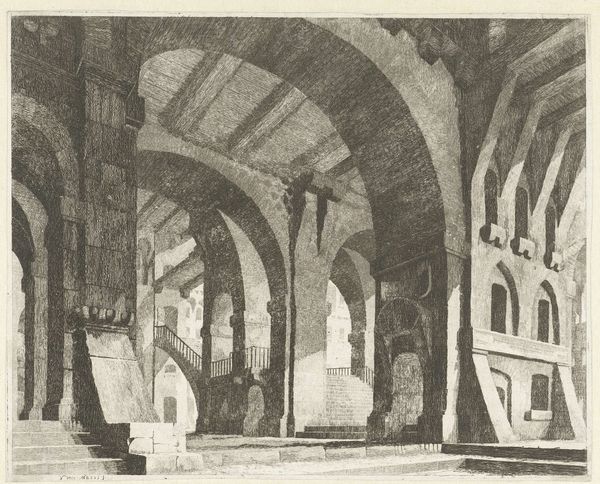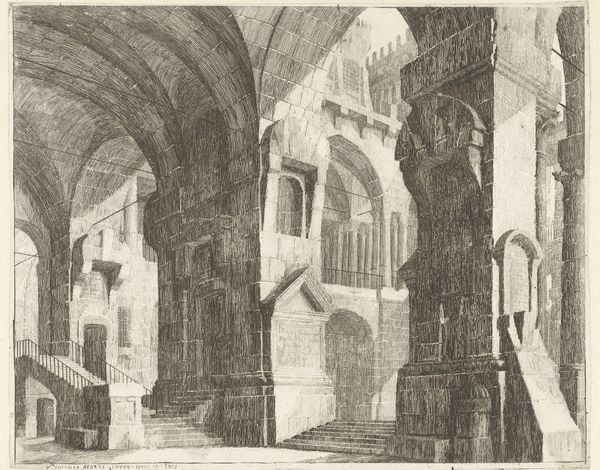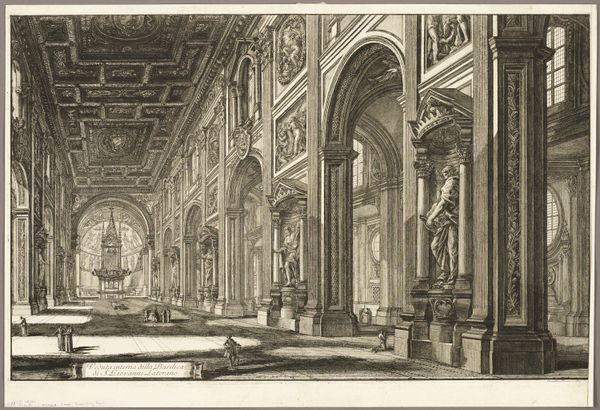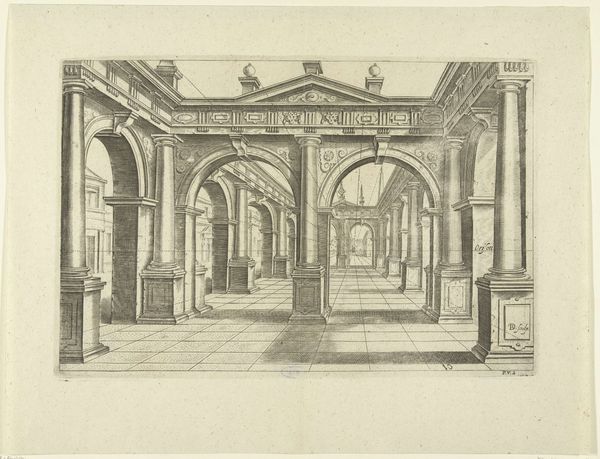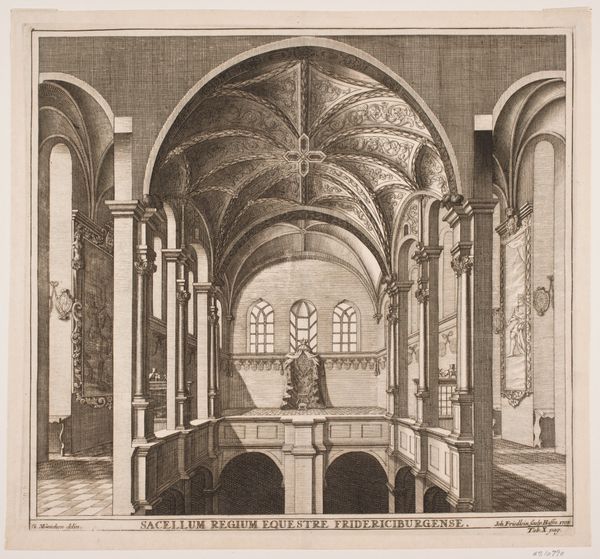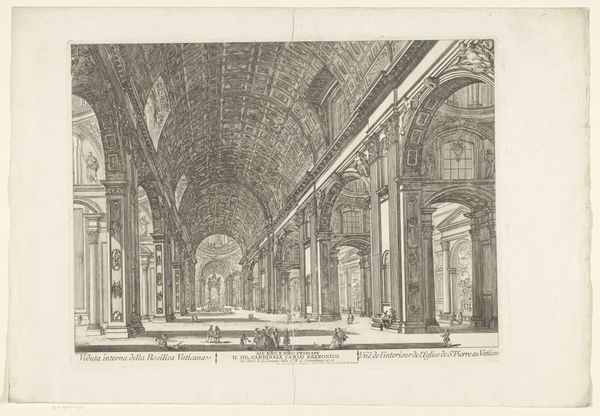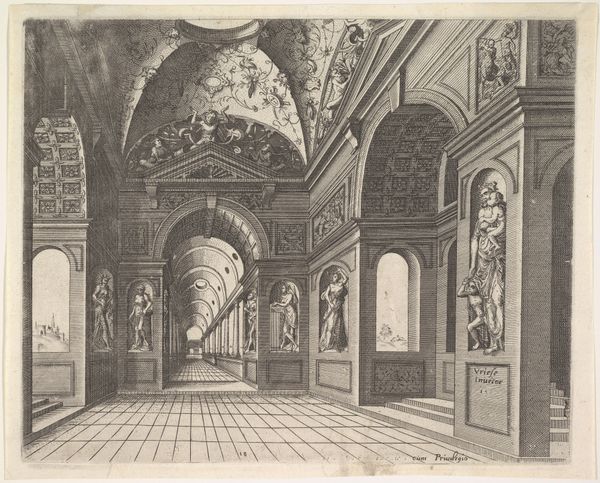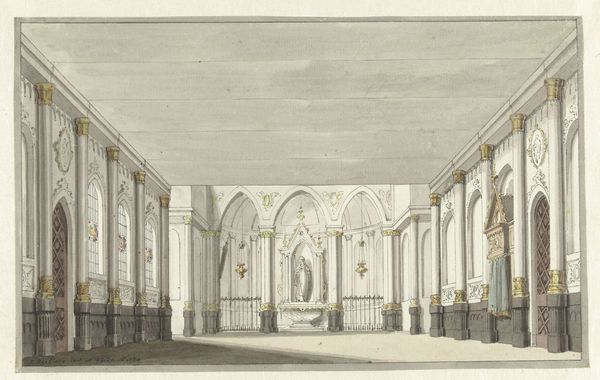
print, engraving, architecture
#
baroque
# print
#
old engraving style
#
perspective
#
geometric
#
engraving
#
architecture
Dimensions: height 186 mm, width 230 mm
Copyright: Rijks Museum: Open Domain
Curator: Looking at Julius Milheuser's 1635 print, "Kerkinterieur," what's your initial reaction to this rendering of a church interior? Editor: It’s immediately striking, isn't it? The starkness, the near clinical detail rendered through engraving. I'm curious about the availability and preparation of materials during that period. The sheer labor to achieve this! Curator: Precisely! Think about the socio-political context, the church's power and influence in 17th century society, particularly over artists who depended on their patronage. Did their faith genuinely inspire them or were these commissions driven more by market demands? Editor: An important question. Given the level of detail, from the textured stone to the carefully rendered figures, there was an intense awareness of the materials. The different tones, and shadows – a complete control of production! And how does the perspective play into perceptions of religious institutions? Curator: The dramatic use of perspective emphasizes the church's grandeur, certainly. But it also draws the eye upward, reinforcing established religious hierarchies. There's something to be said about the interplay of sacred space and control here. Editor: Absolutely. This piece gives us such insight into baroque architecture, revealing an efficient machine made of organized labor, where printmaking serves the institution, replicating images across communities that expand through the markets that the artist helped produce. The very texture seems like a tangible assertion of church dominance, of the time taken for even such simple image distribution! Curator: What truly interests me are the anonymous figures within the interior— the praying man, the observer… Are these mere adornments to emphasize scale and piety, or were they carefully planned inclusions to project certain ideals within baroque cultural politics? How are individual beliefs shaped or challenged by the institution? Editor: Right, because print was already impacting culture deeply at the time. Thinking about this, though, the level of planning required indicates something deeply intentional about its mass appeal... a sort of brand identity. The labor investment in creating an aura. Curator: Well said! By examining the artist, date and materials, as well as looking at the political and societal impact, it enhances my own analysis. Editor: The exercise also demonstrates just how profoundly art creation depended on materiality and markets as essential tools to broadcast identity.
Comments
No comments
Be the first to comment and join the conversation on the ultimate creative platform.
